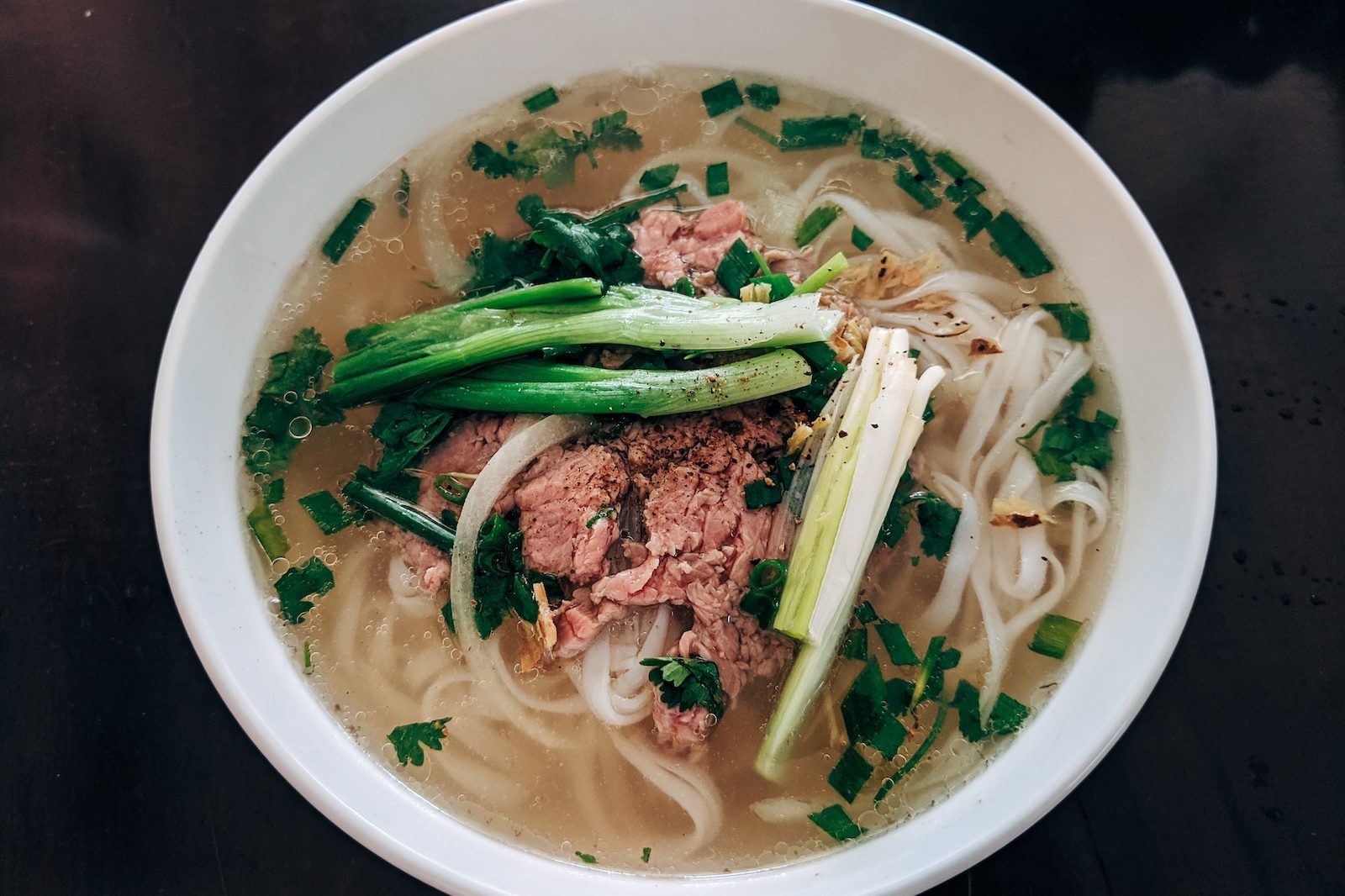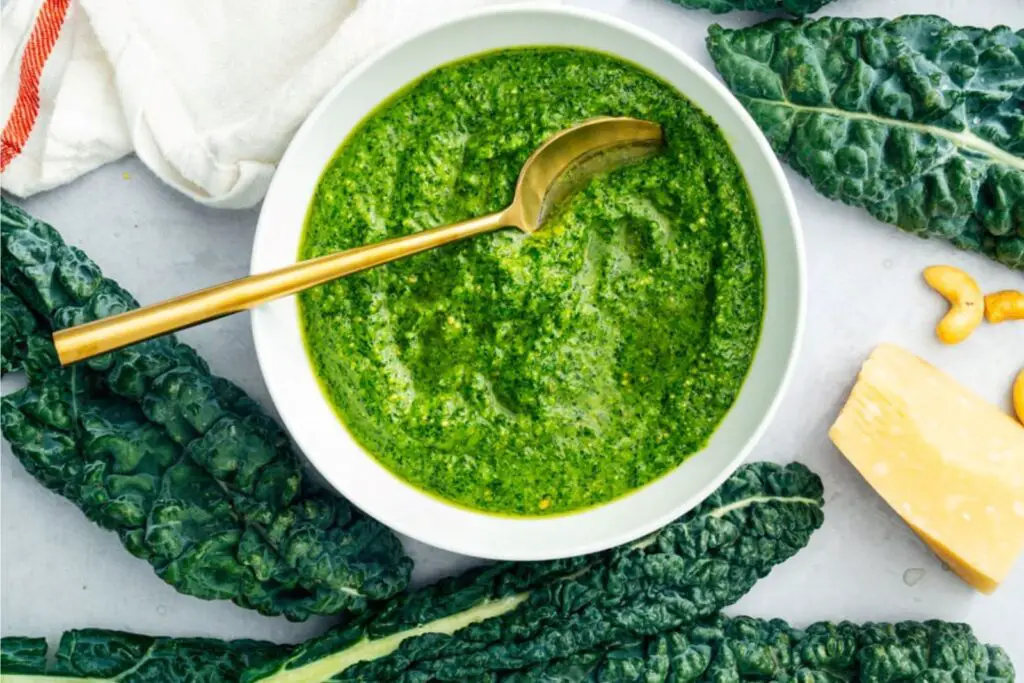
Soup with noodles is a comforting and hearty dish that often features a flavorful broth, tender noodles, and a variety of delicious ingredients. Whether you’ve made a large batch of homemade soup or want to preserve leftovers for later consumption, freezing soup with noodles can be a convenient solution. By following some simple steps, you can ensure that the noodles and other components of the soup maintain their taste and texture after thawing. This article provides a step-by-step guide on how to freeze soup with noodles, allowing you to enjoy a warm and satisfying meal even on busy days.
Here’s a comprehensive process for freezing soup with noodles:
Step 1: Prepare your soup with noodles
The first step in freezing soup with noodles is to create the soup itself. Whether you’re crafting a classic chicken noodle soup or a rich and flavorful ramen, the quality of your soup’s base and the noodles within it is crucial.
If you’re utilizing pre-packaged noodles, carefully follow the instructions provided on the packaging. For those who prefer a hands-on approach, crafting your own noodles from scratch is a gratifying endeavor that grants you control over the ingredients and thickness of the noodles.
The key to achieving perfectly frozen soup with noodles lies in the noodle preparation. When cooking the noodles, aim to achieve an “al dente” texture, a term borrowed from Italian cuisine meaning “to the tooth.” This state indicates that the noodles are fully cooked but still retain a slight firmness when bitten into.
Maintaining the texture of the noodles is paramount for ensuring the overall quality of the frozen soup. Noodles that are overcooked before freezing can absorb excess moisture during the freezing and reheating processes, resulting in a mushy consistency that can be unappetizing. By cooking the noodles to an al dente state, you create a foundation that resists becoming overly soft or disintegrated when the soup is reheated.
Achieving the ideal noodle texture also enhances the soup’s taste, as properly cooked noodles retain their individual flavor and structure, contributing to a more enjoyable dining experience. The al dente noodles not only maintain their integrity during freezing and reheating but also provide a satisfying mouthfeel that complements the flavorful broth and accompanying ingredients.
Can I freeze clear broth soups?
Yes, clear broth soups can be frozen. Their simple composition often retains texture and flavor during freezing, though slight separation might occur. Ensure proper cooling and airtight containers for optimal results.
Can I freeze soup with homemade broth?
Certainly, you can freeze soup with homemade broth. Homemade broth often freezes well due to its quality ingredients and preparation. Cool the broth before adding other components for best results.
Step 2: Let the soup cool slightly
Once you’ve perfected the combination of flavorful broth and tender noodles in your soup, it’s essential to exercise patience by allowing the hot liquid to cool down slightly before proceeding with the freezing process.
Hot liquids, especially those containing a high water content like soups, emit steam when they are exposed to cooler temperatures. This steam can create excess moisture within the container, which, when frozen, can lead to a phenomenon known as freezer burn. Freezer burn occurs when the moisture on the surface of the food (or in this case, the soup) forms ice crystals, and subsequently, that moisture is drawn out of the food. This process can result in changes in texture, flavor, and overall quality of the soup.
By allowing your soup to cool down slightly before freezing, you’re taking a proactive step to minimize the risk of freezer burn. Cooling the soup helps to reduce the amount of steam generated within the container, as the temperature difference between the hot soup and the surrounding air is less drastic. This, in turn, decreases the amount of excess moisture that could lead to freezer burn once the soup is frozen.
Moreover, cooling the soup gradually also contributes to food safety. Placing piping-hot soup directly in the freezer can elevate the temperature within the freezer, potentially affecting the quality and safety of other frozen items in the vicinity. By cooling the soup first, you help maintain a consistent temperature within the freezer, ensuring that all frozen foods are safe and of high quality.
Step 3: Portion the soup
As you embark on the journey of freezing your delectable soup with noodles, a crucial step is to carefully consider the portion sizes in which you intend to freeze the soup. This decision not only aids in efficient defrosting and reheating but also enhances the overall convenience and practicality of enjoying your frozen culinary creation.
When determining the portion sizes, keep in mind both your individual preferences and the needs of your household. One of the best approaches is to freeze soup in either individual or family-sized portions. Each of these portioning strategies offers distinct benefits.
Freezing soup in individual portions is ideal for those moments when you’re seeking a quick and convenient meal solution. It allows you to defrost and reheat only the amount of soup you require at any given time. Whether it’s a nourishing lunch for one or a late-night snack, having single-serving portions readily available reduces waste and ensures that your frozen soup maintains its quality with each use.
On the other hand, freezing soup in family-sized portions caters to gatherings or occasions when you’re preparing a meal for multiple people. These larger portions can be defrosted and reheated as needed to serve a group, saving you time and effort in the kitchen.
In either case, portioning your soup effectively ensures that the reheating process is efficient and straightforward. Larger portions may require longer defrosting and reheating times, while individual portions can be ready in a matter of minutes. Additionally, proper portioning minimizes the need to repeatedly open and reseal a single container, reducing the risk of introducing excess moisture or air that could compromise the soup’s quality during subsequent uses.
Step 4: Ladle the soup into containers
With your perfectly cooked soup and noodles ready for freezing, the next step involves the precise and artful process of transferring your culinary masterpiece into suitable freezer-safe containers. This step is crucial to ensure that your soup retains its flavors and integrity throughout the freezing and reheating journey.
Using a ladle is the recommended approach for transferring the soup into containers. The gentle and controlled pouring action of a ladle minimizes the likelihood of spills or splashes, preserving the appearance and cleanliness of your containers and workspace. As you ladle the soup, take care to distribute both the broth and noodles evenly to provide a balanced and satisfying serving when it’s time to enjoy your frozen creation.
Selecting the right type of container is essential. Freezer-safe containers are designed to withstand the extreme temperatures of the freezer without warping or cracking. They are typically made of materials such as high-density polyethylene (HDPE) or polypropylene, which are resistant to the cold temperatures and won’t leach harmful substances into your food.
While ladling the soup into the containers, remember to leave some space at the top of each container. This space, often referred to as the “headspace,” serves a vital purpose during the freezing process. Liquids, including the flavorful broth in your soup, expand as they freeze. If there’s not enough room for expansion, the pressure within the container can cause it to crack or break, leading to a messy and wasteful situation. By leaving an adequate amount of headspace, you’re allowing the soup to expand without risking damage to the container.
Moreover, proper headspace also prevents excess moisture accumulation within the container. As the soup freezes, any moisture near the top of the container can contribute to freezer burn or an undesirable icy texture. Leaving space for expansion helps to mitigate these issues, ensuring that the quality of your frozen soup with noodles remains intact.
Are there specific containers for freezing soup?
Yes, using airtight freezer-safe containers is essential for freezing soup. These containers, typically made of BPA-free plastic or glass, prevent freezer burn and maintain taste. Choose sizes that match the portion needed to minimize air exposure during thawing and reheating.
Can I use zip-top bags for freezing soup?
Using zip-top bags for freezing soup is possible but can lead to leaks or odors. Airtight containers are safer, preventing contamination and maintaining quality. Consider containers for soups with liquids.
Step 5: Seal and label the containers
As you progress in the process of freezing your meticulously crafted soup with noodles, attention to detail becomes paramount when it comes to sealing and labeling the containers. This step safeguards the taste, texture, and overall quality of your frozen creation, while also facilitating organization within your freezer.
Once you’ve ladled your soup into the chosen freezer-safe containers, the next crucial step is to place lids on these containers. A secure and airtight seal is essential to prevent air and moisture from entering the container, which could result in freezer burn and the deterioration of your soup’s taste and texture. Freezer burn occurs when the moisture on the surface of the food evaporates and recondenses as ice crystals, leading to changes in flavor and quality over time. To combat this, ensure that the lids fit snugly and create an effective barrier against external elements.
Moreover, a tight seal also maintains the soup’s freshness by preventing the absorption of odors from other foods in the freezer. This helps to preserve the distinctive flavors of your soup with noodles, allowing you to enjoy it just as you intended when you first prepared it.
In addition to sealing the containers, it’s vital to label each one accurately. Use adhesive labels or masking tape to note down essential information: the type of soup and the date it was prepared. This labeling practice serves multiple purposes. Firstly, it helps you quickly identify what’s inside each container without the need to open and inspect it. This is especially handy when you’re searching for a specific flavor amidst a collection of frozen meals.
Secondly, including the preparation date on the label is a smart way to track the freshness of your frozen soup. Different soups may have varying storage lifespans, and by noting down the date, you can prioritize consuming the older batches first, ensuring that you enjoy your creations at their peak quality.
Lastly, labeling your containers instills a sense of organization and order within your freezer. Instead of rummaging through unmarked containers, you’ll have a clear visual of your inventory and can select the desired soup without hassle.
Step 6: Freeze the soup
With your soup meticulously prepared, portioned, sealed, and labeled, it’s time to transition to the freezer and initiate the freezing process. This step is crucial for preserving the flavors, textures, and overall quality of your soup with noodles until the moment you’re ready to enjoy it.
Begin by placing the sealed containers of your soup with noodles in the freezer. This step ensures that the soup is exposed to the cold temperatures required for proper freezing. Maintaining an appropriate freezer temperature is essential to prevent the growth of harmful bacteria that can compromise the safety and quality of your food.
When placing the containers in the freezer, consider arranging them in a single layer initially. This arrangement facilitates faster and more uniform freezing. A single layer allows the cold air to circulate freely around each container, ensuring that they freeze evenly and quickly. This quick freezing process helps to preserve the flavors and textures of your soup, as it reduces the formation of large ice crystals that can damage the delicate structure of the noodles and alter the consistency of the broth.
Once the containers are solidly frozen, usually after several hours or overnight, you can opt to stack them to save space. Stacking frozen containers conserves valuable space within your freezer, allowing you to store more items efficiently. However, it’s important to note that when stacking, ensure that the containers are stable and won’t topple over. For added protection, you can place a sheet of wax paper or parchment paper between stacked containers to prevent them from freezing together.
By adhering to proper freezing techniques, you’re ensuring that your soup maintains its optimal taste and quality. The controlled freezing process prevents freezer burn, maintains the desired textures, and safeguards the overall integrity of your frozen culinary creation.
How long can soup with noodles last in the freezer?
Soup with noodles can be frozen for about 2-3 months for optimal quality. After this, flavors and textures may deteriorate. Proper packaging and storage at 0°F (-18°C) help maintain taste and safety.
Step 7: Reheat and enjoy
The culmination of your efforts in freezing soup with noodles is the moment when you get to savor its delicious flavors once again. Reheating frozen soup requires a thoughtful approach to ensure that the taste, texture, and overall quality of the dish are preserved, resulting in a satisfying culinary experience.
To begin, retrieve a container of frozen soup from the freezer when you’re ready to enjoy it. The first step in reheating is thawing, and the safest method to thaw frozen soup is to transfer the container from the freezer to the refrigerator. Allow the soup to thaw gradually in the refrigerator over a period of several hours or overnight. This controlled thawing process prevents the growth of harmful bacteria and maintains the integrity of the ingredients.
Once the soup has thawed completely, it’s time to reheat it. Choose your preferred method: stovetop or microwave. When reheating on the stovetop, pour the thawed soup into a saucepan and place it over low to medium heat. Stirring occasionally helps distribute the heat evenly, preventing the bottom from scorching and ensuring that the soup reaches a consistent temperature throughout.
If you’re using a microwave, transfer the thawed soup to a microwave-safe container. Reheat the soup using short bursts of low to medium power, stirring in between. Microwaving in intervals prevents uneven heating and potential overheating, which can affect the texture and taste of the soup.
While reheating, exercise caution to avoid bringing the soup to a boil. Boiling can lead to overcooking the noodles and altering the texture of the broth. Instead, aim for a gentle and gradual reheating process, allowing the flavors to meld while maintaining the original qualities of the soup.
Upon reaching the desired temperature, your frozen soup with noodles is ready to be enjoyed. Ladle the reheated soup into a bowl, and take a moment to appreciate the aroma and flavors that you’ve successfully preserved through your freezing efforts. Pair your bowl of soup with your favorite accompaniments, such as crusty bread or a fresh salad, and relish the comfort and satisfaction of a well-prepared meal.
Is it safe to reheat soup in its original container?
Reheating soup in its original container is possible, but not always ideal. Transferring to microwave-safe or stovetop pots ensures even reheating and avoids potential container damage due to varying temperature tolerances. Safety precautions and thorough stirring are essential for consistent heating.
Other related questions
Can I refreeze soup with noodles?
Refreezing soup with noodles is generally discouraged due to quality and safety concerns. Repeated freezing and thawing can degrade texture and flavor, particularly affecting noodles. It also increases the risk of bacterial growth.
How do I know if the soup with noodles has gone bad after being frozen?
Signs of frozen soup spoilage include off-putting odor, unusual texture (mushy or grainy noodles), or flavor changes. Ice crystals or freezer burn on the surface are indicators of moisture loss. Trust your senses and discard if in doubt for safety and taste.
Can I freeze soup with creamy bases?
Yes, freezing soup with creamy bases is possible. However, dairy-based soups like chowders or bisques might undergo texture changes upon reheating due to potential separation or slight graininess. Ensure thorough stirring during reheating for best results.
Can I freeze soup with vegetables?
Certainly, soups with vegetables can be frozen. For best results, blanch vegetables before adding to the soup to maintain texture and color. This ensures that they retain their quality and flavor after freezing and reheating.
Can I add fresh herbs before freezing?
It’s recommended to add fresh herbs after reheating frozen soup. Freezing can cause delicate herbs to lose flavor and texture. Adding herbs during reheating preserves their vibrant taste and appearance.
Can I freeze soups with seafood or shellfish?
Freezing soups with seafood or shellfish can alter texture and taste. It’s advisable to add seafood after reheating to maintain quality. Freezing may compromise delicate seafood’s integrity.
Can I freeze soups with rice noodles?
Yes, you can freeze soups with rice noodles, but be aware that rice noodles might become softer upon reheating. Consider this texture change when freezing. Proper packaging and reheating help maintain the soup’s overall quality.
Should I freeze soup with noodles separately or together?
Freezing soup with noodles together is a common practice. However, if maintaining the texture of the noodles is a priority, you might consider freezing the soup and noodles separately. This way, you can reheat the soup and noodles individually and combine them when serving to achieve the desired texture. It ultimately depends on your preferences and the outcome you’re aiming for.








